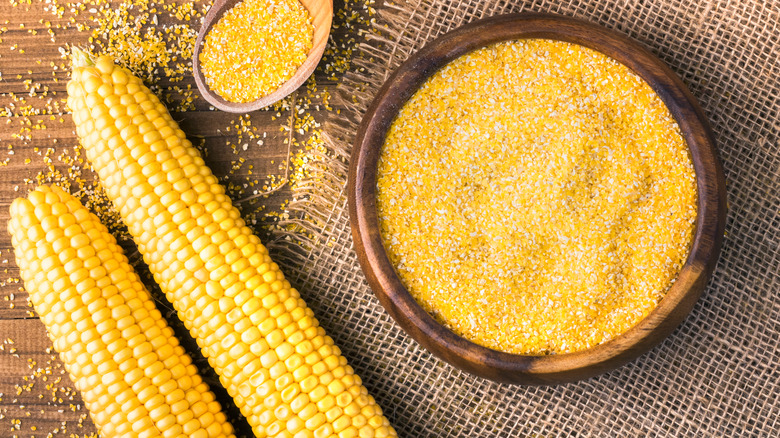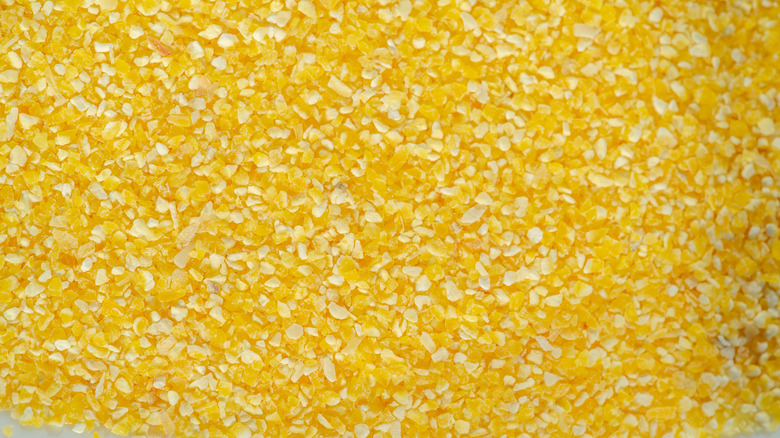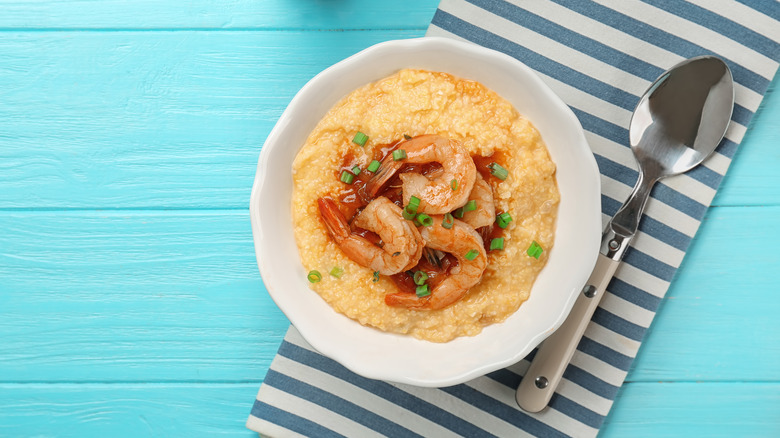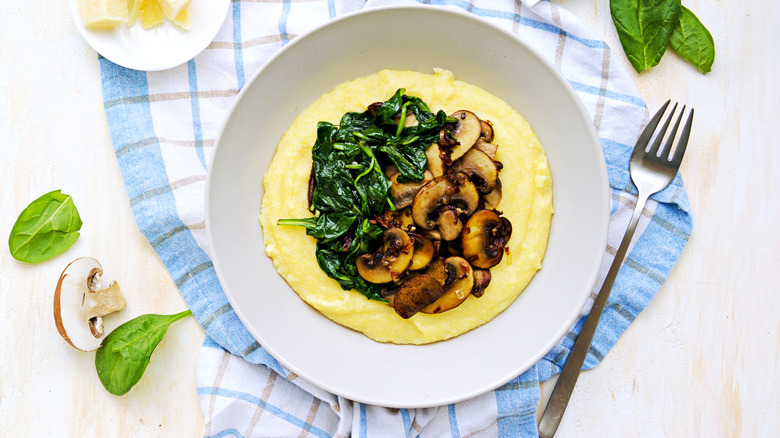Here's What Grits Really Taste Like
Steeped in history, grits are an iconic food (particularly in Southern culture) and best described as a porridge made of reconstituted and dried, pulverized corn. The origins can be traced back to the Native American Muskogee tribe, according to Deep South Magazine. It's said the Muskogee would grind the corn using a stone mill, which would produce the gritty texture that gives the dish its name. Mvskoke Country further notes the traditional title was osafke (or safke) and adds that grits were made after pounding purpose-grown corn and then running the grounds through "a riddle made of split cane or reed."
Originally, grits was strictly consumed as a breakfast food but today the dish has become endlessly malleable. Better Homes & Gardens states that it's a great dinner staple too, thanks to it being so simple and affordable to cook. The magazine also cites the dish's Native American roots but says that the name is believed to come from the Old English word "grytt," implying a coarse meal.
How grits became a menu staple
For many, grits are commonly associated with Southern food, including as a side to shrimp or poached eggs, according to Better Homes & Gardens. But as Serious Eats points out, the dish wasn't actually as culturally ubiquitous as it appears now. Until relatively recently, it was hyper-regional and only found in the Lowcountry of South Carolina and Georgia, says the article. Serious Eats further notes that even through the 1980s, shrimp and hominy (another name for cooked grits) was only mentioned in food articles in correlation with Charleston, South Carolina where it was seen as a local dish.
In 1985, though, things changed. That's when the late Craig Claiborne (famed food writer for the New York Times) visited Crook's Corner, a North Carolina restaurant that became heralded for Southern fine dining, according to Serious Eats. After Claiborne wrote about the restaurant's Shrimp and Cheese Grits, it exploded in popularity. From there, the dish has been deconstructed, updated, and tweaked in myriad ways.
Even today, there are still many different variations of grits. Master Class hones in on the different styles of corn that can be used to vary the flavor — yellow for more of a traditional corn flavor and white for more floral overtones. Of course, the flavor can also change depending on the quality of the corn, the type of grits (instant vs. stone-ground, the latter of which are less processed), the additions, and mix-ins. Many dishes now include butter, salt, milk, or heavy cream.
Are grits and polenta the same thing?
There's another dish similar to grits, that's also made of cornmeal, called polenta. Differentiating between the two can be a bit tricky. Bon Appétit notes one distinction, saying polenta is normally made from yellow corn, whereas grits tend to use white corn. NPR states another difference can be how many times the corn is milled and the fineness of the grounds. They also add that the confusion often happens because many brands will place the tag "also known as polenta" on their grits packaging (and vice versa).
Even so, Washington Post believes that all forms of ground corn that come from dried kernels can be interchangeable, so don't fret if you're looking to make grits but only have polenta on hand. The differences are subtle and nuanced, but the end product will be very similar regardless of which particular type of ground meal you are using.
So, what do grits actually taste like?
Grits tend to have a milder taste, says Eat Delights, comparing it to cornbread, though don't expect it to be as flavorful since the cornmeal is processed much more before cooking. However, they recommend using add-ins like butter, herbs, even bacon to give it that personalized flavor you're looking to achieve. The article also champions the dish's consistency that is smooth and even not unlike peanut butter.
A plate of grits has some nutritional value, too, according to Eat Delights, including about 4 grams of protein and 2 grams of dietary fiber per cup. There's also roughly 25 percent of the daily recommended amount of folate and 8 percent the daily recommended amount of iron, among other minerals, vitamins, and antioxidants.
For cooking grits, it goes without saying that any cheese blended into grits is always an amazing add-in. In addition to shrimp and grits and super-cheesy grits, other go-to options can be grits cakes, grits and greens, grits and eggs, or grits with braised meats, according to Master Class. PBS also has chef Daniel Patterson's recipe for grits that only calls for butter, water, salt, and popcorn kernels.
Any way you prepare it, a well-made bowl of grits is deeply satisfying — for both the stomach and the soul.



